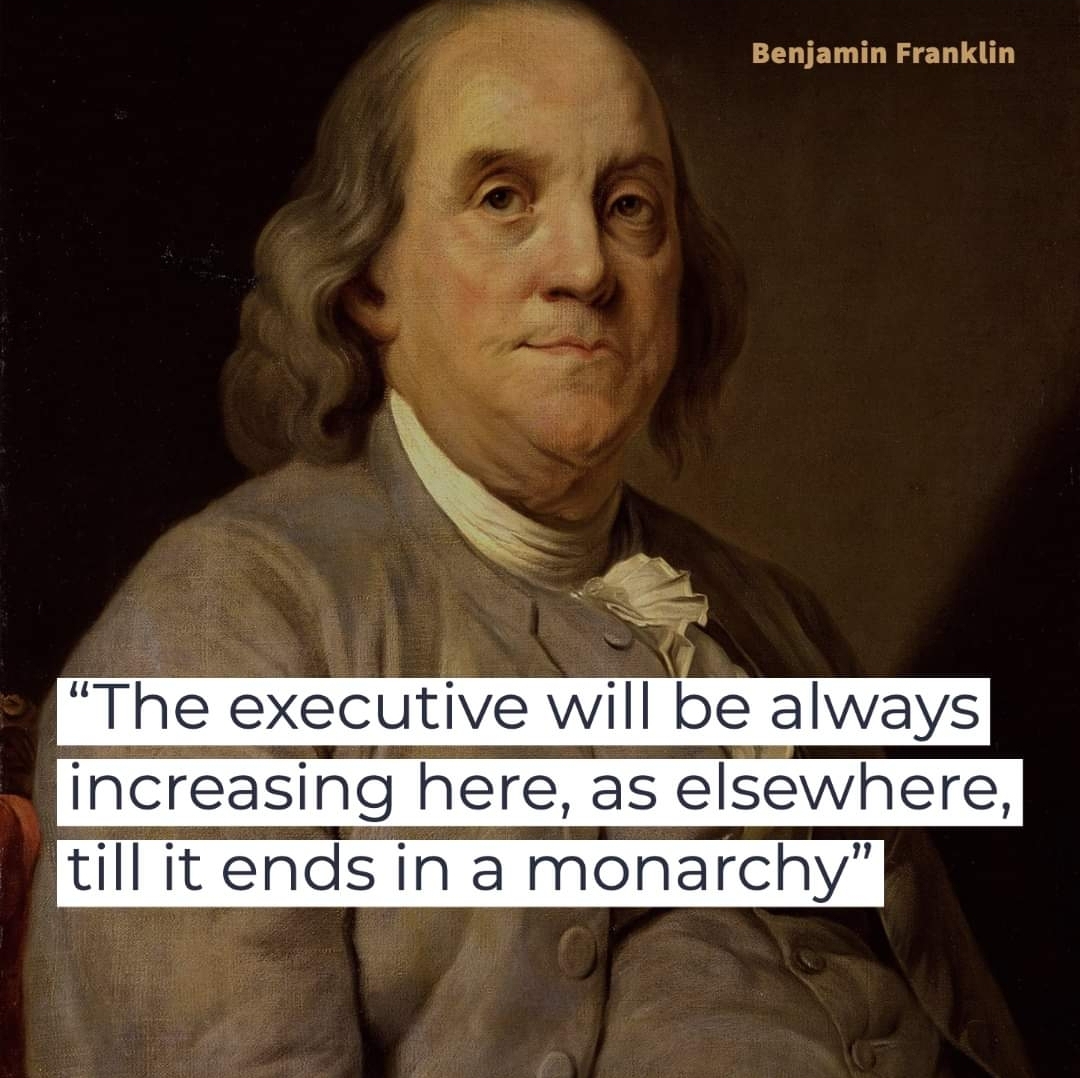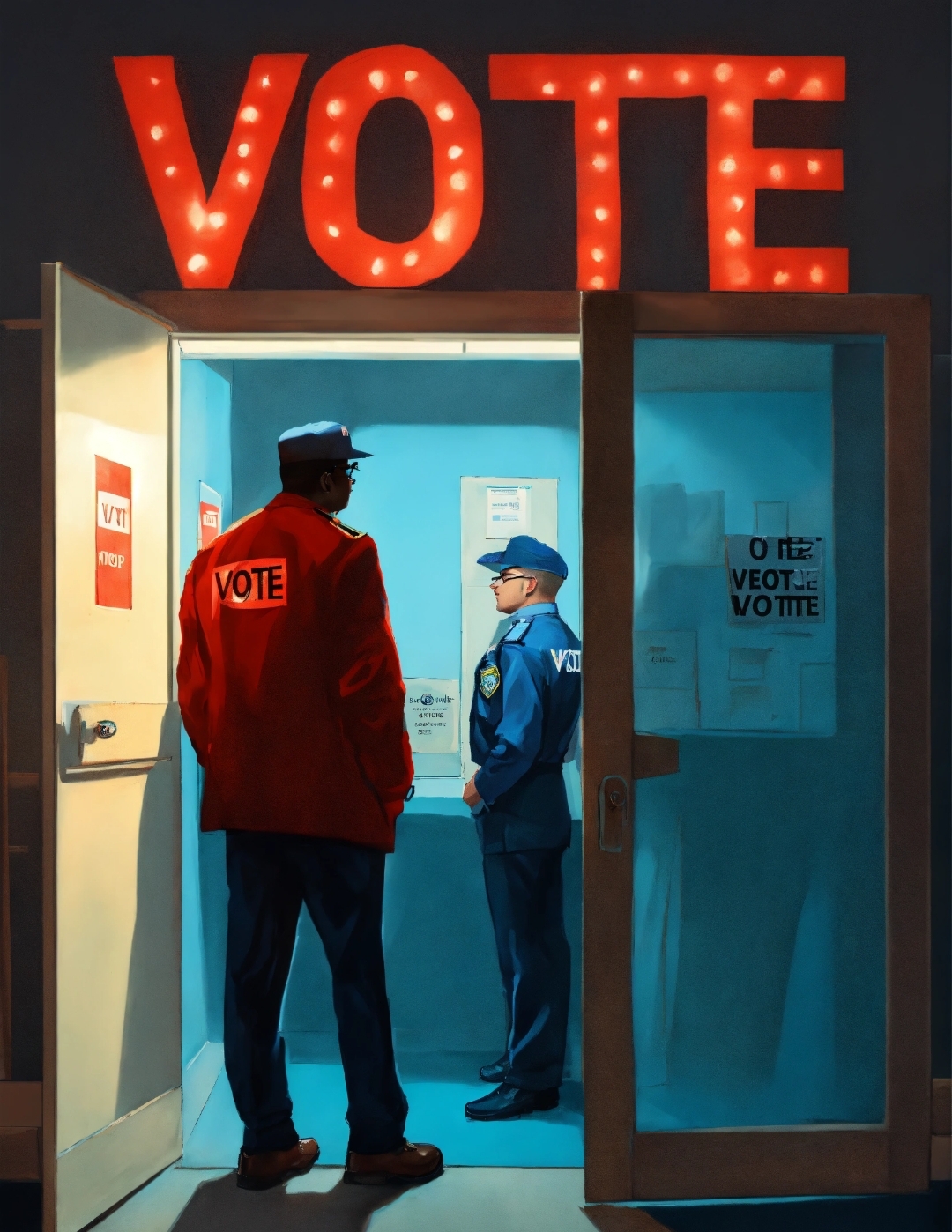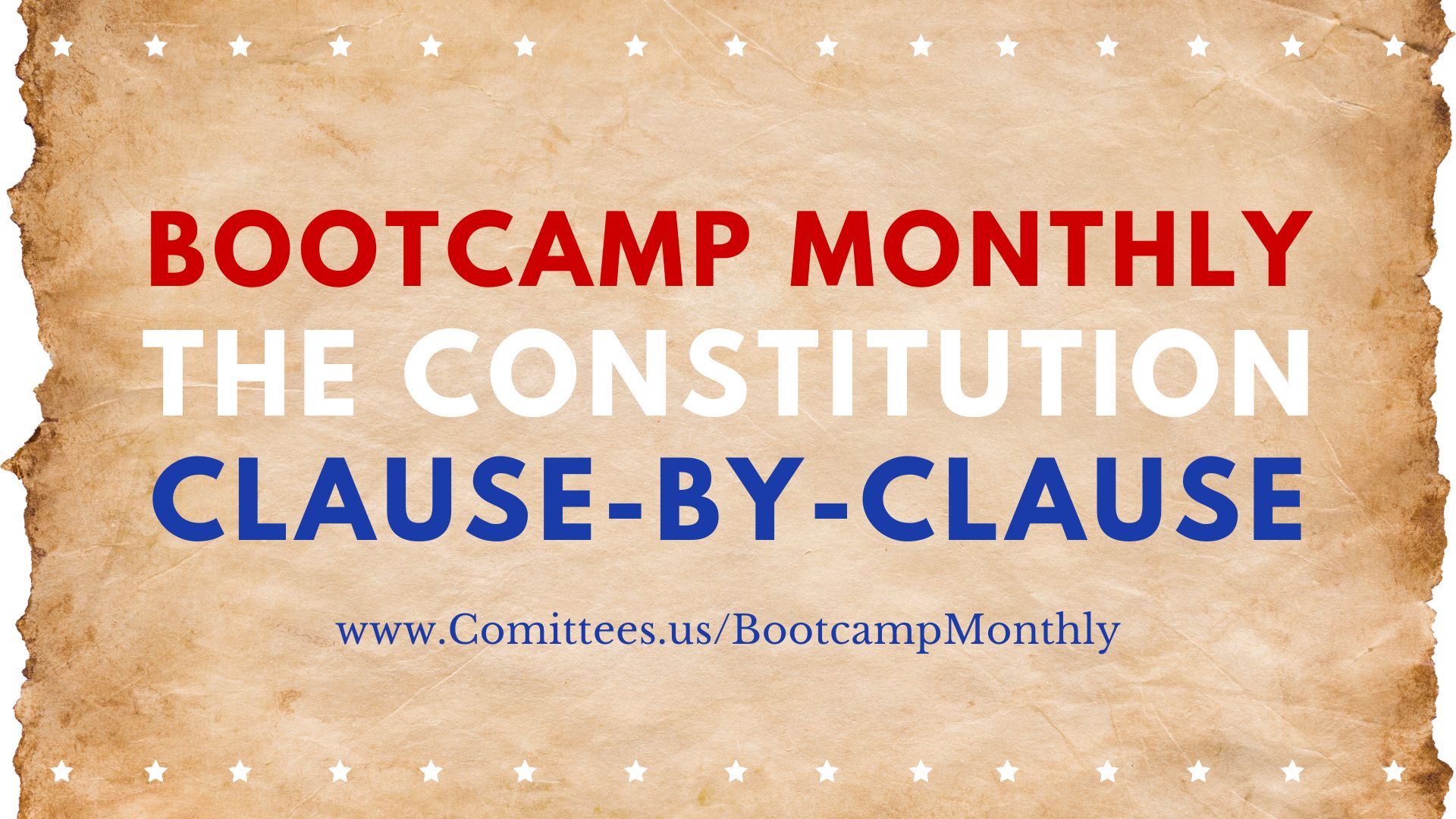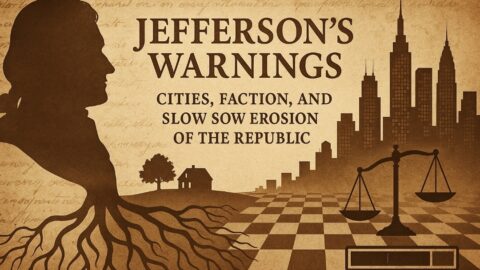- Voting For Your Brand of Tyranny
- Most people think the battle is conservatives versus liberals when it is actually originalists versus living constitutionalists
- Rest assured, the argument you use today to restrict the rights of others will be used tomorrow to restrict your rights as well. This is why being a strict Constitutionalist and originalist is important to balance rights.
- A blue or red tyrant oversteps its Constitutional limitations and boundaries.
- The Constitution is the Rule of Law
- Integrity is the choice between what’s convenient and what’s right
The phrase “voting for your brand of tyranny” suggests that even within a democratic process, the options presented to voters may lead to some form of oppressive or authoritarian governance under different guises or ideologies. It implies a skepticism about the true choice and freedom available in the electoral process, where all available options might result in an erosion of personal freedoms or democratic principles, albeit in different ways.

Key Points and Implications
- Limited Choices:
- Superficial Differences: The phrase suggests that the differences between political candidates or parties are superficial, and the end result is similar—an increase in control over people’s lives.
- False Dichotomy: It criticizes the idea that the only choices available are between two or more undesirable forms of governance.
- Authoritarian Tendencies:
- Power and Control: Regardless of which party is in power, the government expands its influence and control over various aspects of life by overreaching the Rule of Law, which is the Constitution.
- Policy Similarities: Certain policies (e.g., surveillance, military intervention, corporate influence) might significantly overlap despite apparent ideological differences.
- Disillusionment with the Political System:
- Voter Apathy: This perspective can lead to voter apathy, where individuals feel their vote does not make a meaningful difference.
- Cynicism: It fosters a sense of cynicism about the effectiveness and integrity of the democratic-republic process.
- Call for Reform:
- Political Innovation: The phrase can be seen as a call for new political ideas, parties, or reforms that genuinely address the needs and desires of the populace.
- Systemic Change: It emphasizes the need for systemic changes to ensure more genuine representation and accountability.
Examples and Context
- Election Campaigns:
- Campaign Promises: Candidates from different parties often make promises that seem to offer change but may actually maintain the status quo.
- Rhetoric vs. Reality: Politicians might use rhetoric to appeal to voters but enact policies reinforcing existing power structures.
- Policy Outcomes:
- Surveillance and Control: Both major parties might support extensive surveillance, military intervention, or restrictive laws, differing only in their justifications.
- Economic Policies: Economic policies that favor large corporations and the wealthy, regardless of the party in power, can be seen as different brands of economic tyranny.
- Historical and Global Examples:
- Historical Context: In some historical contexts, different factions or parties have offered similar authoritarian rule under different ideologies, such as in some post-colonial or transitioning democratic republics.
- Worldwide Perspective: In countries where constitutional processes are undermined by corruption, external influence, or systemic issues, voters might feel they are choosing between different forms of authoritarianism.
“Voting for your brand of tyranny” critiques the perceived inadequacies and failures of the democratic-republic process, where voters feel their choices lead to similar oppressive outcomes. It reflects disillusionment with the political system and calls for more genuine, accountable, and effective governance. Recognizing and addressing these concerns is crucial for fostering a healthier, more Constitutional society.
Most people think the battle is conservatives versus liberals when it is actually originalists versus living constitutionalists.
The statement “most people think the battle is conservatives versus liberals when it is actually originalists versus living constitutionalists” highlights the fundamental differences in constitutional interpretation that underpin many political and legal debates in the United States. This distinction goes beyond traditional political labels and delves into how the Constitution should be understood and applied.
Key Concepts
- Originalism:
- Definition: Originalism is a legal philosophy that interprets the Constitution based on its meaning when it was enacted.
- Key Figures: Prominent originalists include the late Justice Antonin Scalia and Justice Clarence Thomas.
- Principles: Originalists believe the Constitution’s meaning is fixed at the time of its framing. They argue for strict adherence to the text and framers’ original intent, and they believe changes should come through formal amendments rather than judicial reinterpretation.
- Living Constitutionalism:
- Definition: Living constitutionalism is a legal philosophy that interprets the Constitution as a dynamic document that evolves over time to address contemporary societal values and conditions.
- Key Figures: Prominent living constitutionalists include Justice Stephen Breyer and the late Justice Thurgood Marshall.
- Principles: Living constitutionalists argue that the Constitution’s meaning can and should evolve to meet the needs of modern society. They emphasize the importance of judicial interpretation in adapting the Constitution to current realities and ensuring it remains relevant.
Implications for Legal and Political Debates
- Judicial Decisions:
- Originalist Approach: Often leads to rulings that adhere closely to the text and historical context of the Constitution, which can result in more conservative outcomes.
- Living Constitutionalist Approach: This approach results in rulings considering contemporary values and social changes, potentially leading to more progressive outcomes.
- Key Issues:
- Rights and Liberties: Debates over issues like abortion, gun control, and same-sex marriage often hinge on these interpretive philosophies. Originalists may rely on historical practices, while living constitutionalists may focus on evolving societal norms.
- Government Powers: Disputes over the extent of federal versus state power, regulatory authority, and executive actions are influenced by these interpretive approaches.
- Political Polarization:
- Public Perception: Many people frame political debates as conservative versus liberal, which often aligns with originalist versus living constitutionalist views but doesn’t capture the full complexity.
- Impact on Elections: Judicial appointments, especially to the Supreme Court, become highly contentious as each philosophy can profoundly shape future legal interpretations and societal norms.
Broader Context
- Historical Roots:
- Founding Era: The framers of the Constitution had diverse views, and debates over how to interpret the document have existed since its inception.
- Judicial Precedent: Historically, Key Supreme Court decisions reflect the tension between originalist and living constitutionalist approaches.
- Modern Relevance:
- Cultural Shifts: As society evolves, the tension between maintaining the Constitution’s original meaning and adapting it to modern conditions becomes more pronounced.
- Legal Education: Law schools and legal scholars debate these philosophies, shaping the views of future lawyers and judges.
Understanding the distinction between originalists and living constitutionalists offers deeper insight into many of the legal and political conflicts in the United States. While the conservative versus liberal divide captures broad political ideologies, the originalist versus living constitutionalist debate focuses on fundamental legal principles and interpreting the nation’s foundational document. Recognizing this helps clarify why certain judicial decisions and legal arguments unfold the way they do and highlights the importance of judicial philosophy in shaping American law and society.
Rest assured, the argument you use today to restrict the rights of others will be used tomorrow to restrict your rights as well. This is why being a strict Constitutionalist and originalist is important to balance rights.
“Rest assured, the argument you use today to restrict the rights of others will be used tomorrow to restrict your rights as well. This is why being a strict Constitutionalist and originalist is important to balance rights.” This statement emphasizes the importance of adhering closely to the Constitution to protect individual rights for everyone, regardless of current political goals or agendas.
Key Points and Implications
- A Precedent of Rights Restriction:
- Reciprocal Risk: Restricting the rights of others today can set a precedent that might be used to justify restrictions on your own rights in the future.
- Universal Protection: Ensuring that rights are consistently protected helps safeguard everyone’s liberties and prevents arbitrary or politically motivated restrictions.
- Importance of Constitutional Adherence:
- Strict Constitutionalist Approach: This philosophy emphasizes adhering closely to the Constitution’s text, preventing arbitrary interpretation that could erode rights.
- Originalist Perspective: Originalism focuses on the Constitution’s original meaning, which can provide a stable foundation for rights protection and prevent shifting interpretations based on contemporary political pressures.
- Balancing Rights:
- Consistency: By following a strict and originalist approach, legal interpretations remain consistent, providing a reliable framework for rights protection.
- Prevention of Overreach: This approach limits the potential for governmental overreach and abuse of power, ensuring that rights are not unjustly restricted.
Examples and Context
- Historical Precedents:
- Free Speech: Restricting free speech for one group sets a dangerous precedent that could be used to justify further restrictions on free speech for others.
- Due Process: Eroding due process protections for certain individuals or groups can lead to a broader erosion of these protections for all citizens.
- Modern Applications:
- Surveillance and Privacy: Expanding government surveillance powers in the name of security can lead to widespread privacy rights violations.
- Gun Rights: Efforts to restrict Second Amendment rights for certain individuals can lead to broader restrictions that affect all gun owners.
The statement underscores the importance of a consistent, principled approach to constitutional interpretation. By adhering to strict constitutionalist and originalist philosophies, we can protect individual rights and prevent the arbitrary restriction of freedoms based on shifting political winds. This approach helps to maintain a balanced and just legal framework, ensuring that everyone’s rights are safeguarded now and in the future.
A blue or red tyrant oversteps its Constitutional limitations and boundaries.
“A blue or red tyrant oversteps its Constitutional limitations and boundaries” underscores the idea that political overreach and tyranny are not confined to any political party. Whether a leader or governing body identifies as blue (typically Democratic) or red (typically Republican), the core issue is the abuse of power and the disregard for constitutional constraints. When a ruler or governing body exceeds its legitimate authority, it typically results in the erosion of individual freedoms, violation of rights, and, often, the implementation of oppressive measures.

Key Points and Implications
- Non-Partisan Nature of Tyranny:
- Equal Opportunity Overreach: The statement highlights that both major political parties are susceptible to overstepping constitutional limits when in power.
- Focus on Actions, Not Labels: It encourages judging political actions based on adherence to constitutional principles rather than party affiliation.
- Arbitrary Rule: Decisions made by tyrants are often arbitrary, reflecting personal whims rather than laws or established procedures.
- Constitutional Boundaries:
- Checks and Balances: The U.S. Constitution establishes a system of checks and balances designed to prevent any one branch of government from becoming too powerful.
- Overreach: Tyrants often expand their power beyond legal or constitutional limits, ignoring checks and balances designed to prevent such overreach.
- Rule of Law: Both parties are bound by the same legal and constitutional frameworks meant to limit governmental power and protect individual rights.
- Historical and Contemporary Examples:
- Executive Overreach: Both Democratic and Republican presidents have been criticized for actions perceived as overreaching executive authority, such as unilateral executive orders or military interventions without congressional approval.
- Legislative and Judicial Actions: Legislative overreach or judicial activism also illustrates how power can be misused across the political spectrum.
- Public Vigilance:
- Citizen Responsibility: The statement calls on citizens to remain vigilant and critical of their leaders, regardless of party, to ensure that constitutional limits are respected.
- Accountability: Holding leaders accountable requires active engagement in the political process, informed voting, and support for institutions that check governmental power.
Examples and Context
- Executive Power:
- War Powers: Presidents from both parties have engaged in military actions without explicit congressional authorization, raising questions about the constitutional limits of executive power.
- Executive Orders: Using executive orders to implement significant policy changes can be seen as bypassing the legislative process, leading to accusations of overreach.
- Legislative Actions:
- Patriot Act: Passed with bipartisan support, the Patriot Act expanded government surveillance powers, which many critics argue infringes on constitutional rights.
- Spending and Regulation: Both parties have been accused of overstepping constitutional limits through expansive federal spending and regulatory programs.
- Judicial Overreach:
- Activist Judgments: Judges appointed by both Democratic and Republican presidents have made rulings that some view as creating new law rather than interpreting existing law, which can be seen as judicial overreach.
The concept that “a blue or red tyrant oversteps its Constitutional limitations and boundaries” emphasizes that the abuse of power is a risk inherent in any political party. It calls for a focus on principles and actions rather than party loyalty. Upholding constitutional limits requires vigilance and accountability from all citizens, ensuring that power is exercised within the framework designed to protect liberty and prevent tyranny. Recognizing this helps maintain a balanced and just governance system where all rights and freedoms are safeguarded.
The Constitution is the Rule of Law
“The Constitution is the Rule of Law” underscores the foundational principle that the U.S. Constitution serves as the supreme legal authority in the country. This means that all laws, policies, and governmental actions must conform to the Constitution, ensuring a stable and just legal framework.
Key Points and Implications
- Supremacy of the Constitution:
- Foundational Document: The Constitution is the highest law of the land, providing the legal framework for the government and protecting individual rights.
- Supreme Court: The judiciary, particularly the Supreme Court, interprets the Constitution to resolve disputes and ensure that laws and actions align with constitutional (Original/Strict or Living Constitutionalist viewpoint)principles.
- Rule of Law:
- Equal Application: The rule of law means that no one is above the law, and everyone is subject to the same legal standards and protections.
- Legal Stability: The Constitution provides a stable legal foundation that guides laws’ creation, interpretation, and enforcement.
- Checks and Balances:
- Separation of Powers: The Constitution divides government power among the legislative, executive, and judicial branches to prevent any one branch from becoming too powerful.
- Accountability: This system of checks and balances ensures that each branch can limit the powers of the others, maintaining a balance of power and protecting against tyranny.
- Protection of Rights:
- Bill of Rights: The first ten constitutional amendments explicitly protect individual freedoms, such as freedom of speech, religion, and due process.
- Amendments: The Constitution can be amended to address evolving societal needs while maintaining its core principles, allowing for both stability and adaptability.
Examples and Context
- Judicial Review:
- Marbury v. Madison: This landmark Supreme Court case established the principle of judicial review, allowing the Court to declare laws and executive actions unconstitutional if they violate the Constitution.
- Role of Courts: Courts at all levels interpret the Constitution to ensure that laws and policies adhere to constitutional (Originalist/Strict or Living Constitutionalist) principles.
- Legislative Actions:
- Congressional Authority: Laws passed by Congress must be consistent with the Constitution. If a law is challenged, courts can review its constitutionality.
- Legislative Limits: The Constitution limits legislative powers to protect individual rights and prevent government overreach.
- Executive Power:
- Presidential Actions: Executive actions and orders must comply with constitutional limits. Courts can check executive power by reviewing the legality of these actions.
- Checks on Power: The Constitution provides mechanisms, such as impeachment, to address abuses of executive power.
“The Constitution is the Rule of Law” highlights the Constitution’s central role in guiding and limiting government actions. It ensures that power is exercised within a legal framework that protects individual rights and maintains a balanced and just society.
“Integrity is the choice between what’s convenient and what’s right.” — Tony Dungy
Any time the blue or red president violates the Rule of Law and their oath of office by overreaching or overstepping their descriptive roles contained in the blueprint of our country’s Constitution, we are experiencing tyranny and are for the ideology of Living Constitutionalists.
As the tyranny of blue or red moves, the Overton Window gradually moves toward Statitism and Corporatism. Our rights are moved away from the Bill of Rights and the Constitution. The new ruler doesn’t return our rights but keeps them moving toward more state power, promising not to allow it any further overreach until the next crisis of expedience. The damage has been done, and it never returns to what it once was as it keeps moving slowly like a frog in a pot over generations to the control of oligarchs.

“The true danger is when liberty is nibbled away, for expedients, and by parts.” — Edmund Burke
By allowing or advocating one’s brand or color of a team to violate their oath of office and the Supreme Law of the land, by violating the Rule of Law, we are consciously or unconsciously participating in our team’s tyranny by justifying overstepping the legal, ethical, and moral boundaries contained in the Constitution, because of convenience, expedients, fear, and/or ease. Or worse, because we are tyrants ourselves.
“A mind that is not clouded by ego, a mind that is still, serene, and clear, is able to perceive the world as it is and not as it is distorted by our desires and prejudices.” — unknown
It shows how, by allowing our team to adopt the Living Constitutionalist ideology, we allow the gradual destruction of the chains wrapped around the elected officials through the described roles in the Constitution. It sets a precedent to destroy our rights by “restricting the rights of others” as it “will be used tomorrow to restrict your rights.”
Adhering to constitutional principles upholds the rule of law (the Constitution), providing a stable and fair system of governance for all citizens. We must avoid the trap of voting for our brand of tyranny. We must hold our elected officials’ feet to the fire to be accountable to the US and State Constitutions.
“Holding someone accountable is not something you do TO them; it’s something you do FOR them. Holding someone accountable is a form of love; it shows them you truly care because you hold them to a high standard of excellence.” — Alan Stein, Jr
- There Are Really Only Two Types of Government: Republic & Oligarchy
- There Are Two Types of Power: Concentrated & Separated
- Power Tends to Concentrate Into the Hands of A Few, An Oligarchy
- The Evils of Tyranny Are Rarely Seen By Those Who Lack Historical Knowledge.
- The Results of Generational Psyops On A Society
- Psychologically, Trumps Crisis Could Have the Same Effect As A Psyops






